Want to save more than 50% off ammo and shoot 1/2-inch groups at 100 yards?
Reloading your own ammo might be the key!
But you’re not sure if it’s right for you? We’ll cover everything from the reasons to reload as well as how difficult/annoying it is to reload.
Plus…do you really save money? We’ll answer that as well with some example equipment setups that span all budgets.
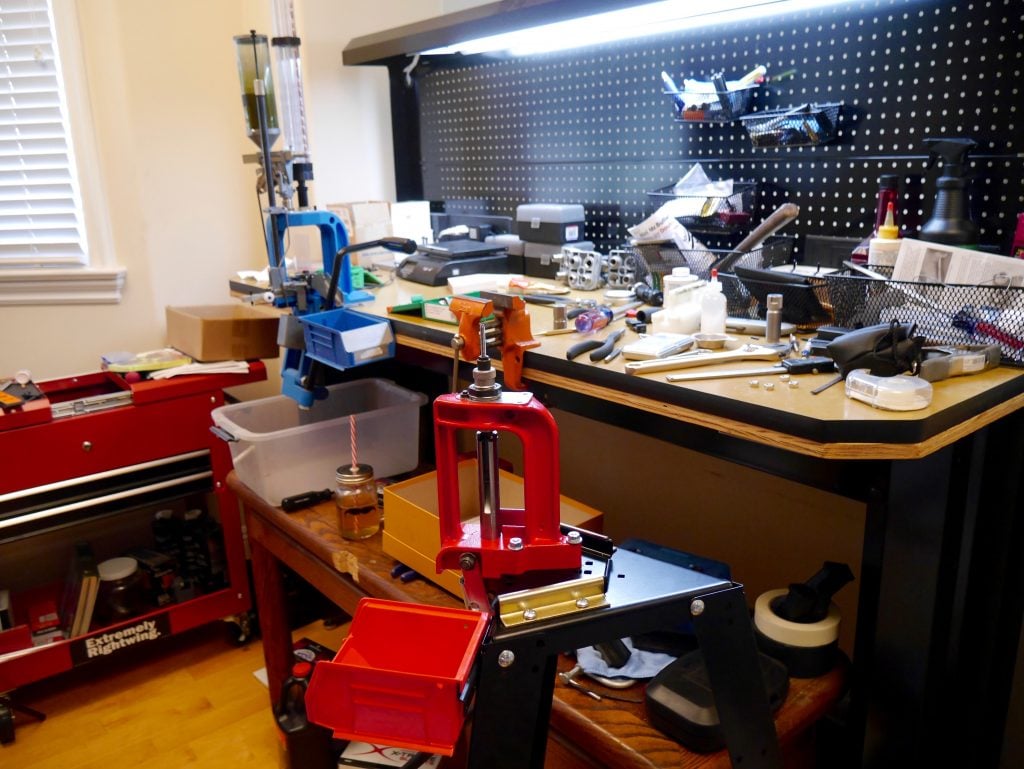
But first…some disclaimers that this is purely educational. Take care in reloading since it could be a potentially dangerous hobby.
Table of Contents
Loading…
Top Reasons to Reload Your Own Ammo
1. Saving Money
This reason tends to pop up first…but it’s a little deceiving. I don’t think any reloader actually ends up saving money overall. They just end up shooting a lot more for the same price.
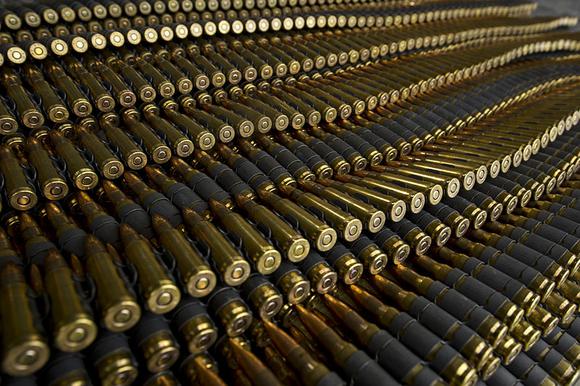
But you still save money per round right?
Yes!
A big cost of ammo is the brass casing. So why give it away to your shooting range that will end up selling it to reloaders, when you can reuse it a couple times.
How much will I save?
Sorry, but it depends on the caliber. For something that is already pretty cheap like 9mm, you might only save 10-20% in cost and you don’t even factor in time.
But for something more expensive like match grade .308, you can save more than 50%. For example…I make my .308 ammo for around 70 cents a round while Gold Match ammo is almost $2 a round.
2. Maximizing Accuracy and Customizing Loads
This reason usually comes up second. And for good measure!
Reloading allows you to basically be able to make custom rounds for every single one of your guns.
Now, a super brief lesson in barrel harmonics as I understand it.
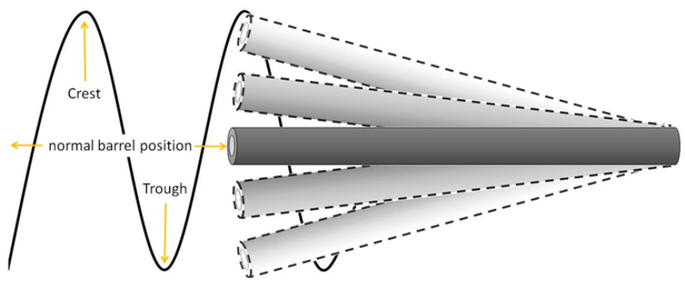
A barrel will whip around when you shoot a round. So you might want the barrel to whip the least possible. You do this by adjusting the speed of the bullet as it goes through the barrel by adding or reducing gun powder during your reloading process.
Got it?
Good…that’s only one way to wring some more accuracy out of your rounds.
Others include extending the length of your round (seating your bullet further out of the brass casing). This reduces the force needed for the bullet to leave the casing and also reduces the distance the bullet might need to “jump” into the “lands” (or rifling) of the barrel.
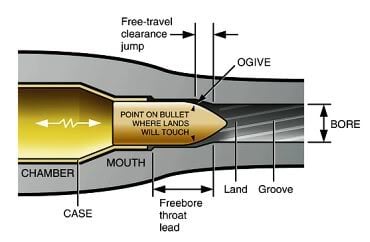
Another big reason is to use different bullets, especially for hunting or competition shooting.
For example, I shoot USPSA handgun and I like using heavy 147 gr bullets since they feel more like a “push” when shooting. My .308 bolt gun also loves 175 gr HPBT bullets which is a problem since most match ammo comes in 168 gr.
If you’re already lost…don’t worry. You don’t have to optimize for every barrel. I just think it’s pretty cool that you can. The majority of ammo I make is for plinking rounds that mimic regular ammo.
3. Restrictive Gun Laws
This falls a little under saving money.
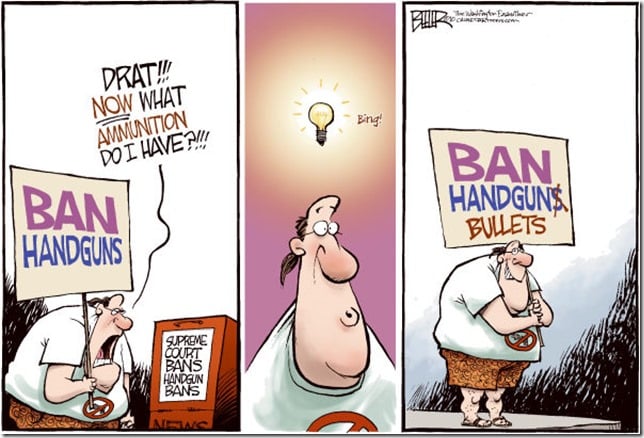
But gun laws are only getting more and more restrictive. Lots of cities already prohibit online ammo sales. And check out California which recently passed a bill that would make you have to get an ammo license and purchasing online ammo through a licensed vendor.
By reloading you can avoid ammo shortages, price gouging, and hoarding that could go around after unfortunate events, restrictive laws, or elections.
Just be sure to get enough reloading supplies if you decide reloading is really for you.
4. For Fun
If you like upgrading your gun to perfectly fit your style, then you’ll probably love wringing out the last bit of accuracy with reloading.
And if you describe yourself as DIY…there’s nothing else more DIY than making your own ammo.
Plus, there’s a bit of mechanical stuff you get to tinker with (and upgrade) in the ammo presses (ammo making machine).
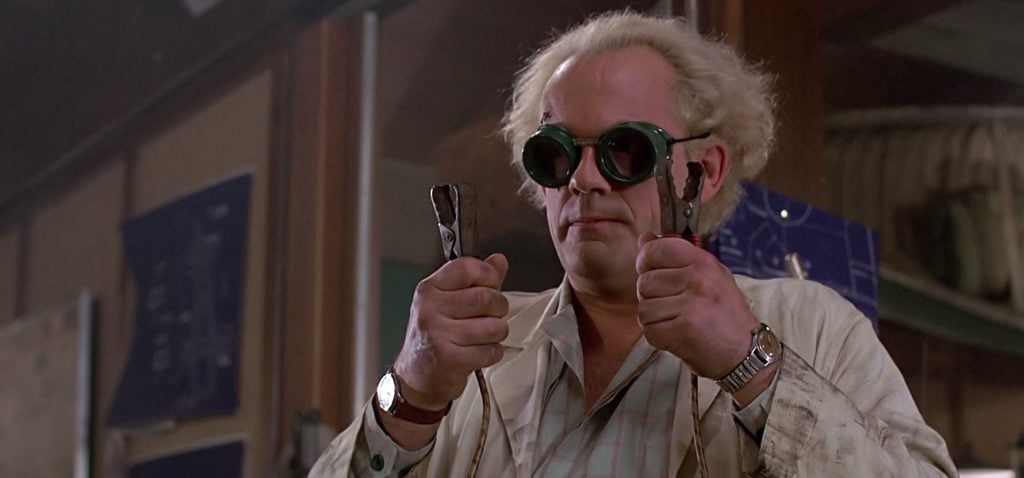
How Do You Reload Ammo?
Now that you’ve gotten a couple reasons of why reloading ammo is awesome…let’s go over what it actually entails.
And keep in mind this is a rough overview that isn’t caliber specific. It’s meant to show you the possible steps in reloading your own ammo.
Some calibers it might be advisable to follow all the steps while some only need the bare minimum.
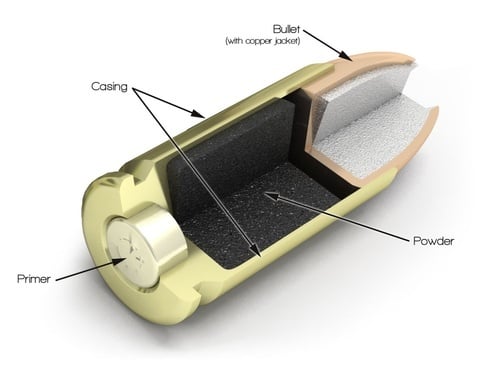
Parts of a Bullet Cartridge
First…a refresher.
There’s a couple parts to a standard bullet cartridge. The brass casing, gun powder, bullet, and primer. The gun’s hammer/striker hits the primer which creates a little explosion that ignites the gun powder and pushes the bullet through the barrel.
You’ll be preparing the case and putting all these parts together in a reloading press.
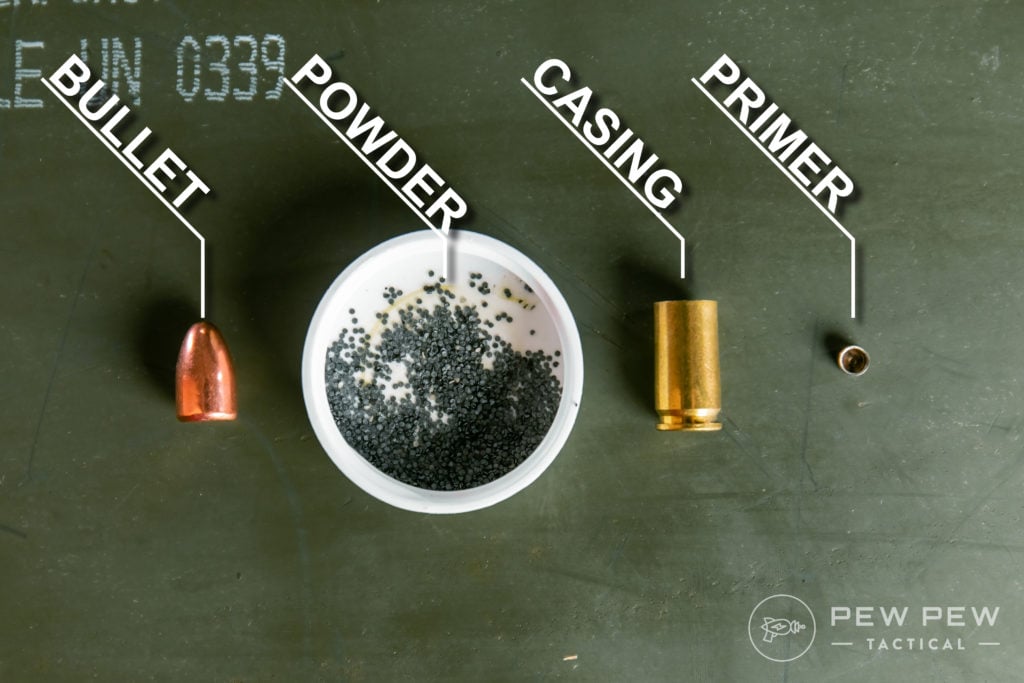
Case Prepping
When a gun goes PEW, there’s an explosion inside the brass casing that expands it to fit the gun’s chamber. There’s some shrinkage (heh) shortly after, but basically the brass case is a little larger than it was before.
It’s also a lot dirtier.
First, you’ll want to clean the casings using a brass tumbler, some sort of medium (usually ground up corncob or walnut shells), and polish you dump into the medium.
This usually takes place outside of the house since it’s loud, takes a few hours, and has some potential lead contamination risk.
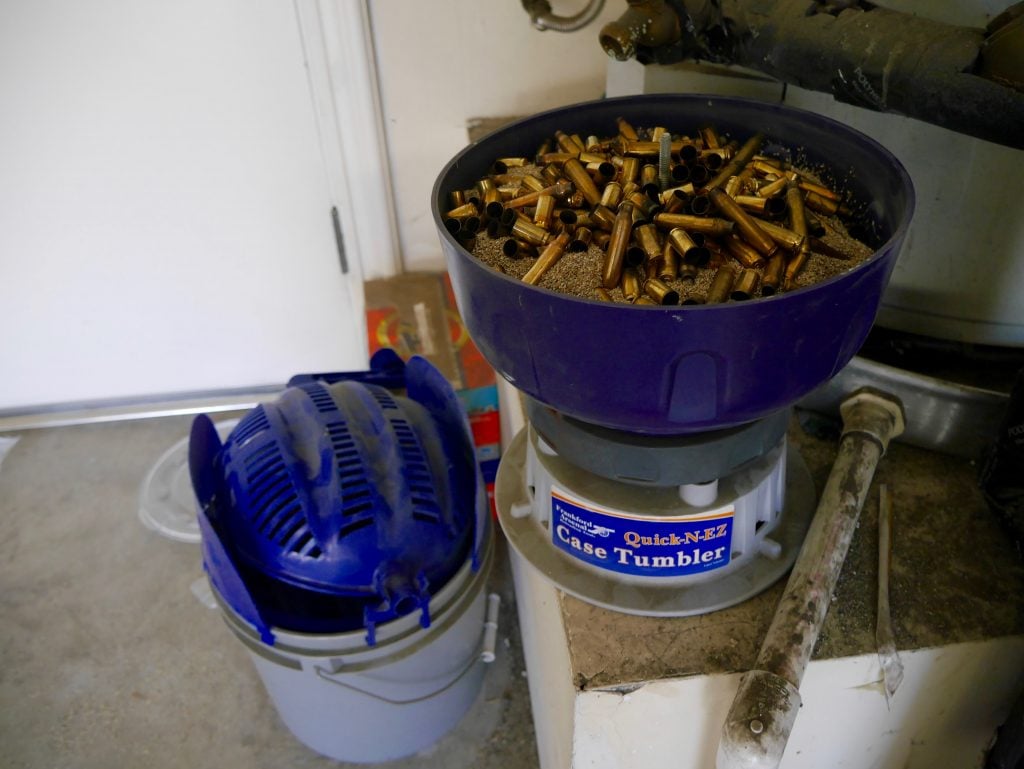
Hooray, shiny brass!
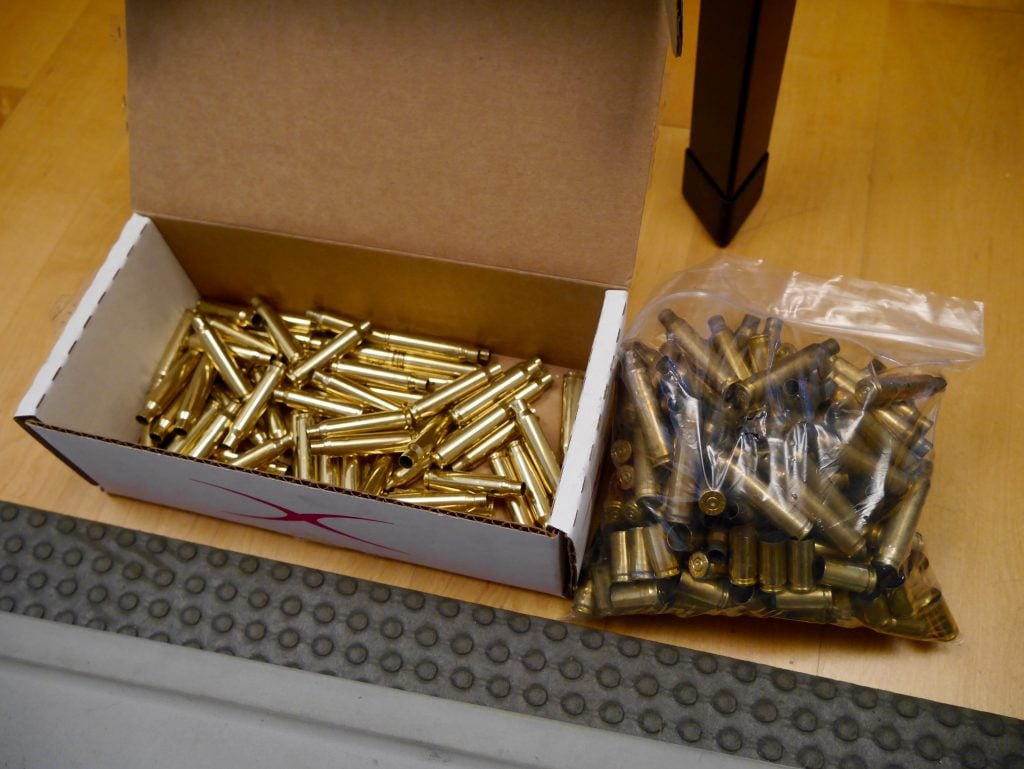
If you’re going to be reloading this used brass, you’ll need to bring it back to its original specifications so it will feed reliably.
Remember the primer?
Sometimes you are using military brass that has a crimped primer pocket (where the primer goes). Or you want it super uniform for precision’s sake.
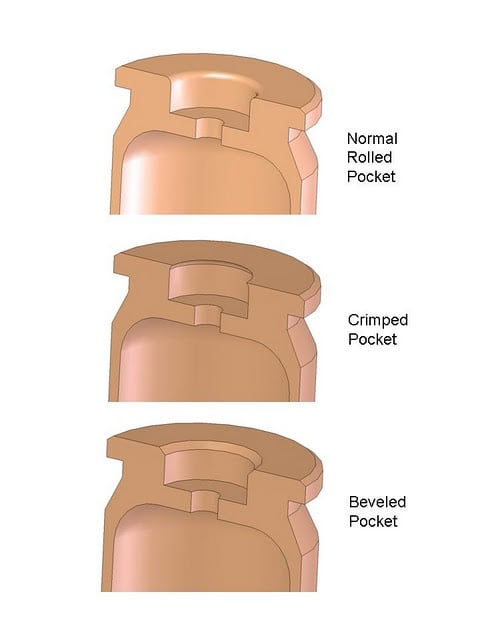
You’re going to have to pop out (deprime) the primer and then using a reamer to resize or a cleaner tool. Some people pop out the primer before tumbling so it takes care of the cleaning.
There’s various ways to pop out the primer but usually it’s with a reloading press and usually in conjunction with resizing the brass.
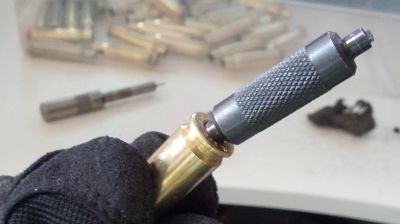
Speaking of resizing the brass…
There’s two main kinds of brass…straight wall and bottleneck. Pretty self-explanatory.
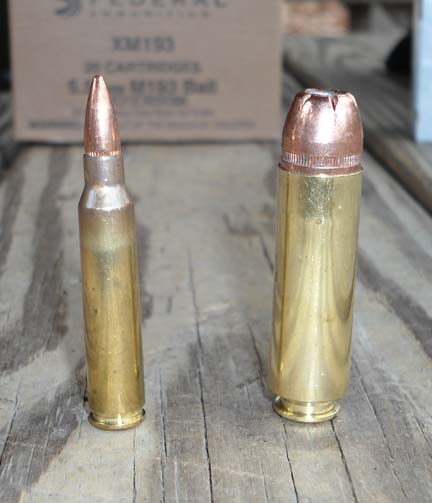
You run the fired case through a resizing die where it will reform the brass. Some calibers/dies you will need to lube up each case.
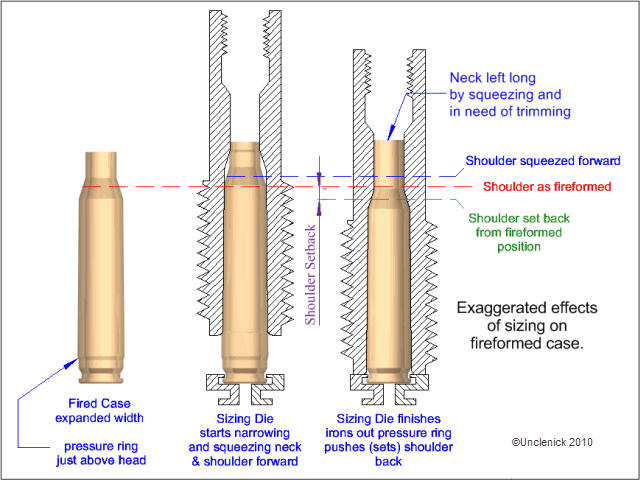
You see above that there’s a good amount of stuff that occurs for bottleneck cases since you have to worry about the “shoulder.” Examples include the popular .223 and .308 calibers. A lot less stuff happens in “straight wall” cases such as most pistol calibers.
The resizing die also reforms dents and case mouth problems.
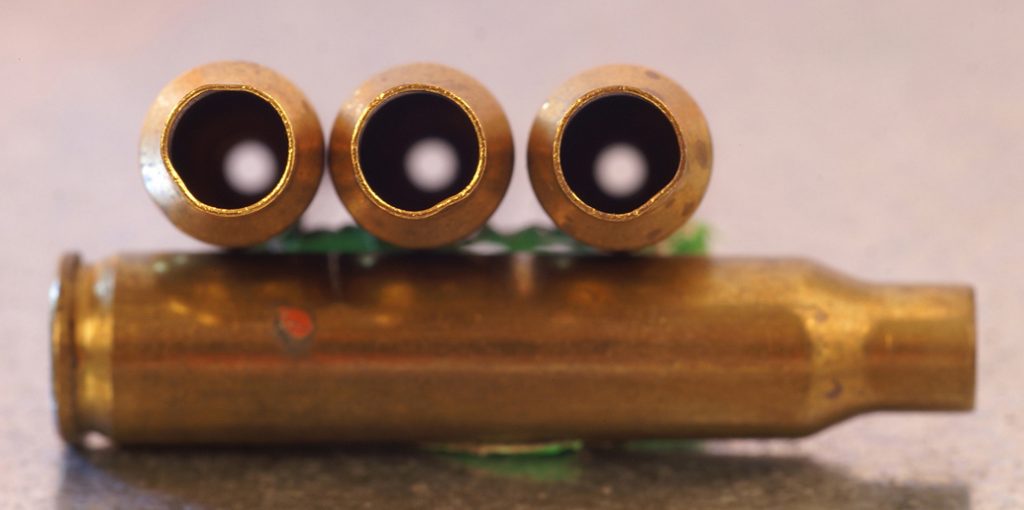
Depending on caliber, how anal you are, or how many times a case has been shot, you might need to check the case for proper length and cut off the excess since the brass has been squeezed down in size.
There’s various hand-based or even electric options.
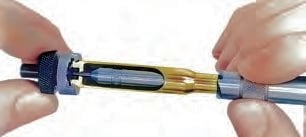
If you do end up cutting some material off…it’s going to be sharp which might mess up your bullet seating. So you have to deburr and chamfer the case.
Again…lots of options.
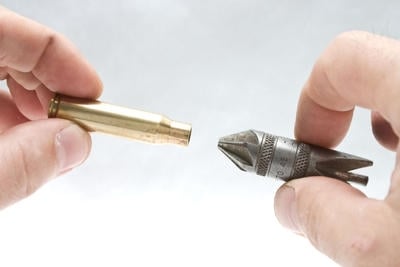
Still with me? We’re just getting started. But at least the brass is prepped and inspected for any cracks/big dents/splits.
Priming
There’s various ways to put in a new primer. Some are hand tools while others are integrated into the first sizing stage.
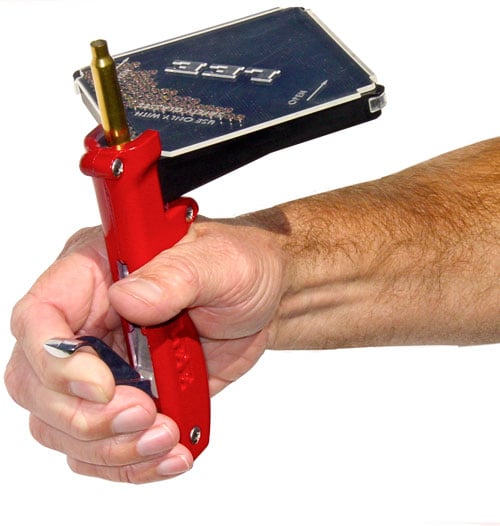
Now that you’ve got your primed cases…let’s add some powder.
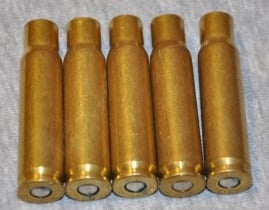
Adding Gunpowder
Technically now smokeless powder. And there’s a lot of them out there…many of which will work for your caliber/bullet. But some that are more specific to a certain caliber or bullet weight.
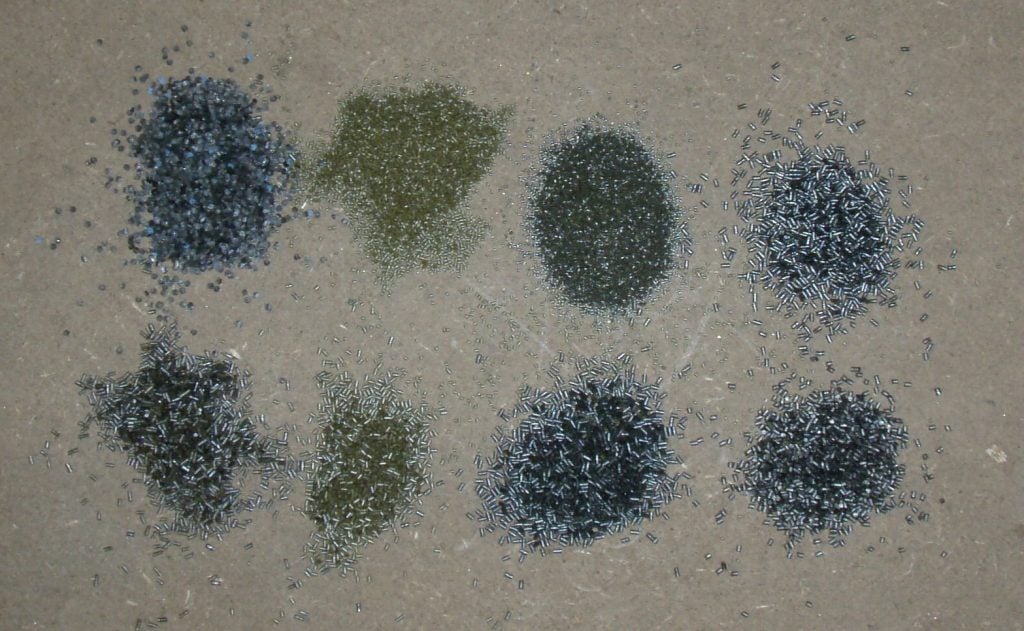
You’ll need to look up how much to start with in a reloading manual. It will also have the correct size dimensions needed for case length, etc.
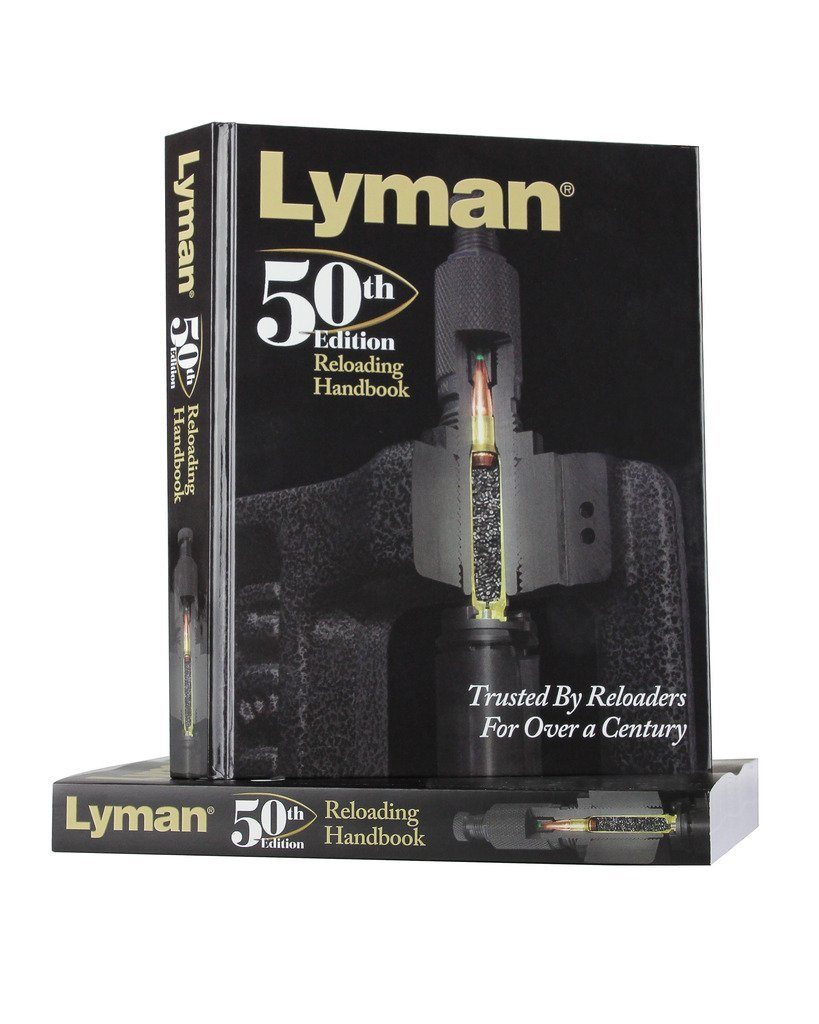
Again, many ways to drop the powder into the prepped and primed case. Most popular are standalone powder measures or part of a press.
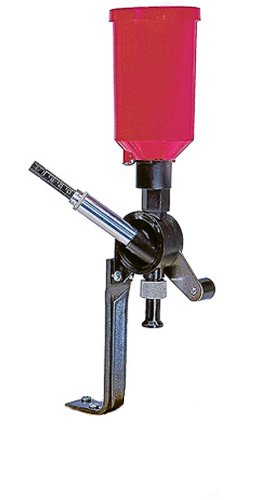
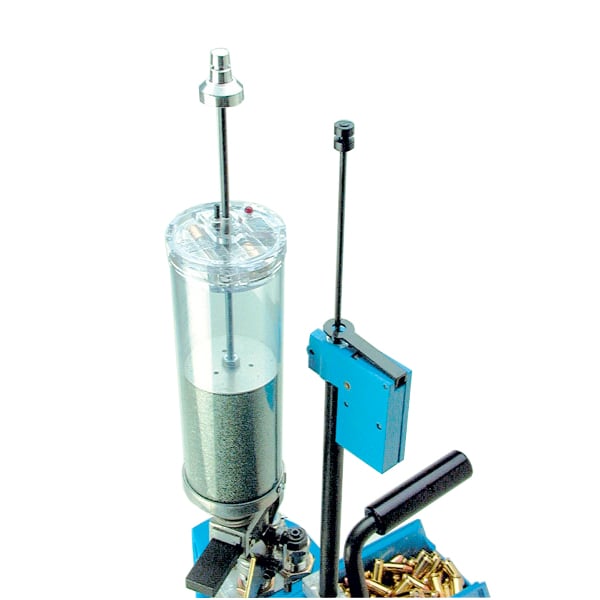
Bullet Seating
We’re in the home stretch!
Now is the time to add a bullet and press it into the case.
Problem is…sometimes the case is too narrow for a bullet to fit and you will need to “flare” the top. You usually will only see this pertaining to pistol cases. Sometimes this is with a separate die or integrated into the resizing or powder stage die.
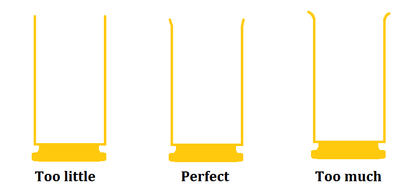
Now you just place the bullet on top of the case and run it through a bullet seating die. Sometimes you will want to add a crimp (pressing in the case onto the bullet) that makes the bullet more secure.
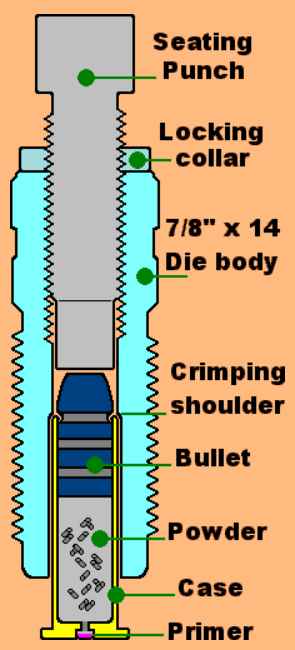
Voila! You are done…now onto the equipment that makes this all possible.
Types of Reloading Presses
Reloading presses span from cheap single stage presses that take one die at a time, to monstrous progressive presses that can crank out 1000 rounds an hour.
Single Stage Press
Called a single stage since there’s only room for one die. So you’ll need to switch it out at least 2+ times (resizing and bullet seating), not to mention priming the cases either in the press or by hand.

The red press is my Lee Breech Lock Challenger kit ($120) that comes with almost everything you need to get started.
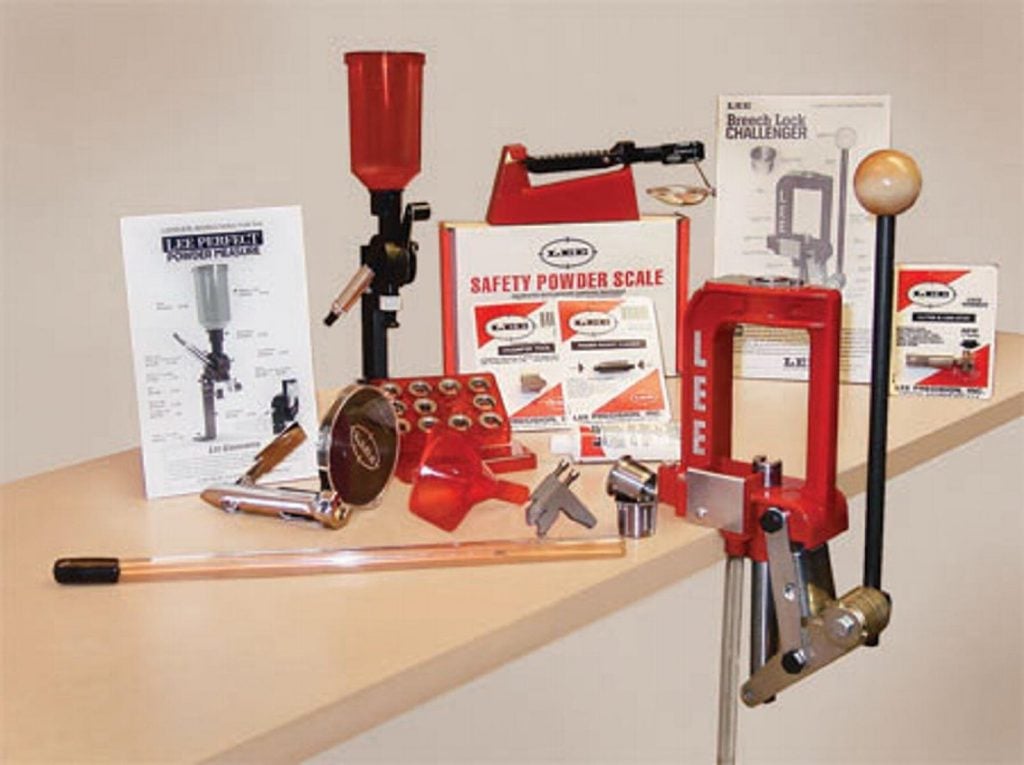
It includes a powder station, hand-priming tool, scale, and some case prep tools. Perfect to see if reloading is for you but you don’t want to spend a lot of money.
Turret Press
A turret press allows the use of more dies that can be rotated over the casing. Saves a lot of time since you don’t have to switch out dies every time you go to a different stage of reloading.
Below is the Lee Turret Press kit Lee Turret Press kit ($190). See how the powder station is attached to the press and there’s several empty slots for additional dies.
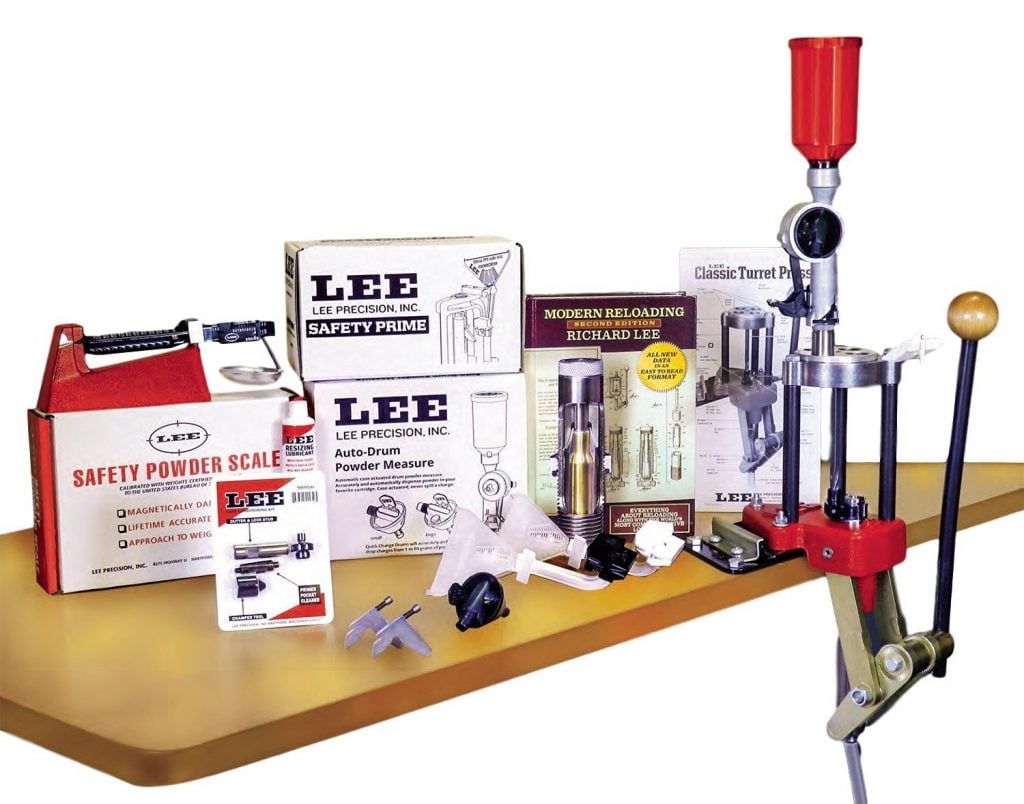
Progressive Press
The progressive reloading press has multiple die stations on top and also multiple places to put your brass cases. This way each pull of the press you are doing up to four different actions.
Some models also have “toolheads” that allow quick caliber switches without having to set each die again.
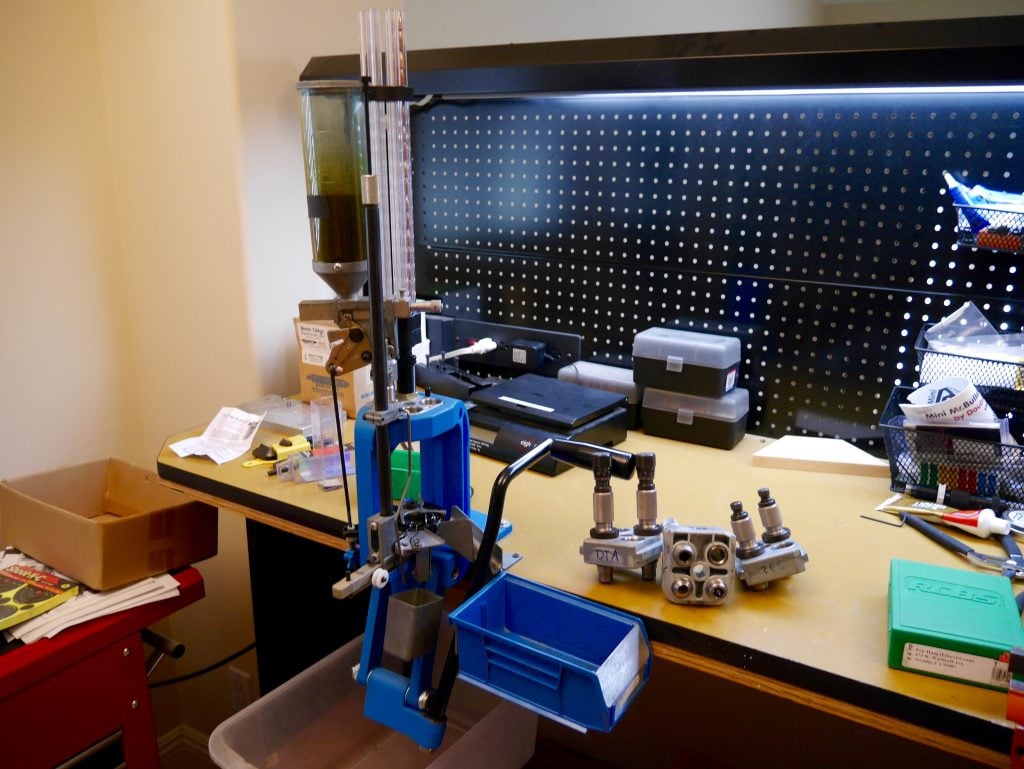
I use the Dillon 550B Progressive Press ($460) which allows a good amount of reloading per hour. A great machine if you are ready to upgrade from the single stage or turret, or if you know you’re going to be reloading quite a bit.
There’s also higher end progressive models that “auto-index” so you don’t have to move the plate that holds all the brass cases. But we’ll save that for another article.
Check out our new article that covers the Best Progressive Presses for Beginners.
Conclusion
Ok, so it’s not really a conclusion since there’s so much left to go over such as all the additional equipment you’ll need such as the tumbler, dies, powder, primers, etc.
Plus, how do you actually reload specific calibers?
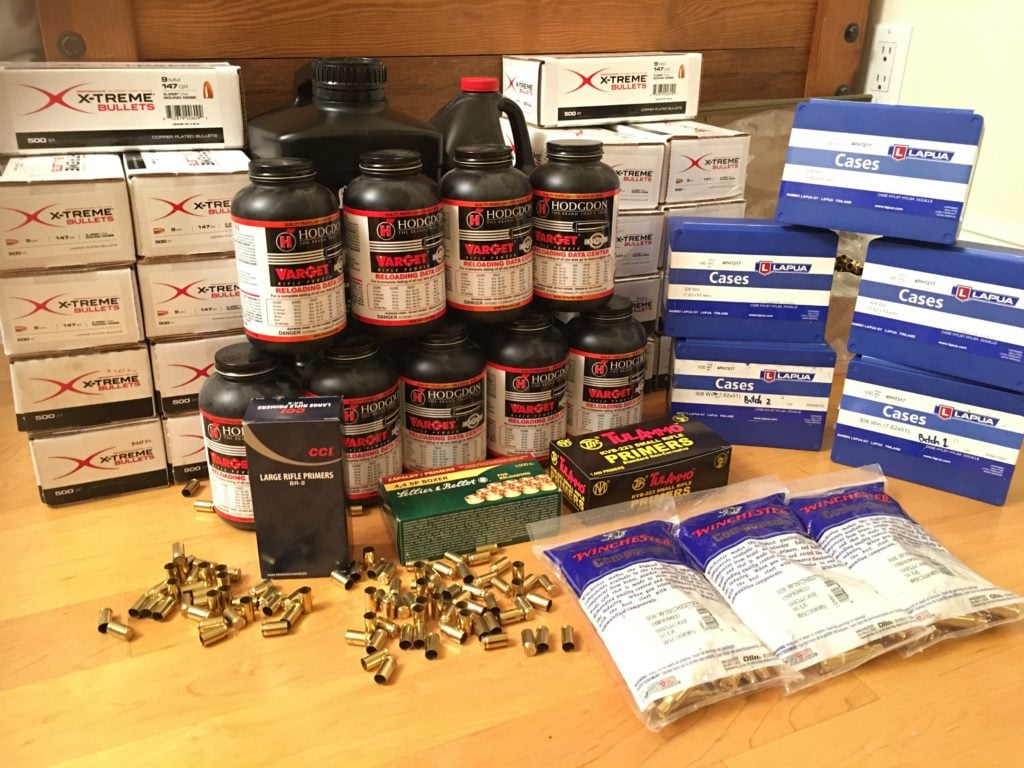
Check out the answers in our Ammo + Reloading section.

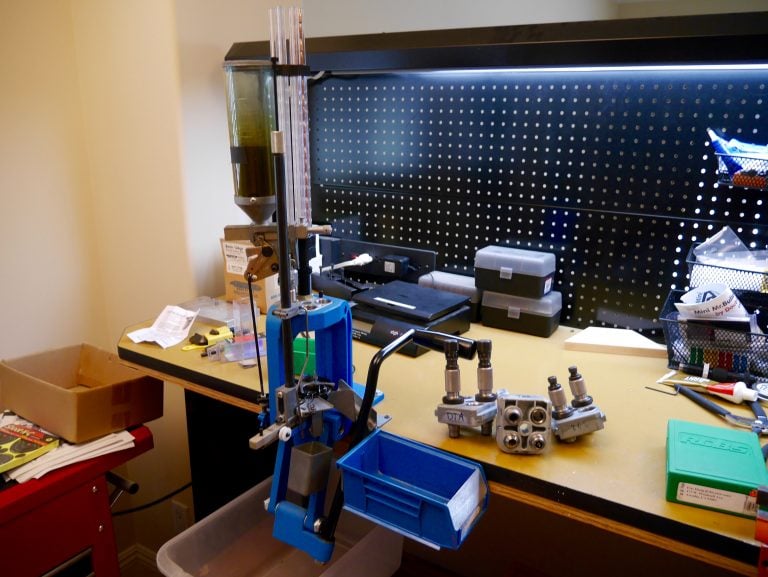
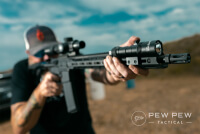






44 Leave a Reply
I am a long time reloader and this is an excellent explanatory primer for beginners. Thanks
Thanks for reading!
I have a sharps rifle similar to the one in Quickly Down Under and cannot find ammo for it so I would like to load my own. It uses a 45-120 or a 45-70 I am told. What would I have to get to load my own ammo for this sharps?
Good article! Thank you! I just got back in to reloading with my Lee Pro 1000 after a 10 year hiatus. Made a ton of 9mm back then and still have enough for whatever and now I am reloading for my Rossi R92 20" in .357 magnum.
Great read and very well put together.
Thanks Eric
Good explanation for the beginners. Should give them a good start.
Its funny reading this article now since most of the prices for everything reloading are through the roof. I paid $200 for my Lee Breech Lock reloading kit just a couple of weeks ago. Definitely not finding them for $120 anymore.
is it possible to have one press and load rifle, hand gun, and shotgun shells of the same press, or do I need a separate press for each application?
One press can be used for rifle and pistol but a different type of press is used for shotgun shells
Great article, I am very interested in reloading and this was a great start, thank you Eric
Great view of things. By reading your article I wondered where you from. At the end, I´ve got the answer. Anyway, it not about what color of skin you might have. It´s about your mindset, and that perfectly suits mine. Many thanks for that!
Fabien from Luxemburg
Great insight on reloading. Im hooked, thank you
My partner and I are reloading and behave used brass that he cleaned in vibrator and used layman media walnut shell that was treated with something red and it has stained inside brass even running insonic cleaner what can we do thank you
Did you try running it back through the tumbler with different media? Corn or even a different brand and add some of the commercial cleaning products that help with vibratory cleaners? Also, are you saying you ran it through a sonic cleaner and that didn't help at all?
Deprime wash in dish soap and warm water, rinse, rinse rinse, warm water and cup of vinegar let sit overnight rinse rinse rinse heat in oven to dry
Thank you Eric,
Just starting this awesome hobby with a few buddies. Thank you for your step by step advice.
Hete we are only 6 months later, and reloaders are saving a HELLUVA LOT more than you said they'd save in January unfortunately.
I have some upper command that wants to reload less lethal sock bean bag rounds to save a buck. Any insight on if this is a good or bad idea?
Do you have just a list?
Sorry, just a list of equipment needed.
Not sure if you would know but you seem very knowledgeable so it is worth asking. I am new to reloading and was given a brand new in the box Lee Precision Load Master for .45 ACP. My question is, can that same press/combo be converted/setup for .223?
Hi Marty, I actually have that same press and love it. Once I get everything set up I can crank out 500 to 600 rounds an hour. To answer your question, yes! This press will do everything up to the really large rifle calibers. Buy another die holder, get a set of Lee dies, if you're shooting out of a bolt rifle you won't need to crimp however if you're shooting from an AR15 platform I'd highly suggest a light crimp on your 223/5.56 ammo. Lee makes a great set of carbide dies that come with the crimping die... Check out Amazon's list of Lee products.
Skip
Yes, of course, you just need to buy the dies for .223/ 5.56mm change them out, and learn to set them. then you are off and running. I would suggest you Check out YouTube and other sources on the net to learn how to do that.
I just started reloading with the Lee Challenger single stage press 9MM Luger 124 grain Hornady XTP using Alliant Unique powder with Winchester WSP primer. My problem is using the Hornady loading data the powder range is 4.0 to 5.0 maximum. However when I look at the Lee load data they give 5.1 to 5.8 maximum. Which load data is correct?
Is there any reason not to load boat tail bullets in a straight wall case to improve accuracy? Hand loads for 350 Legend. The factory ammo has not impressed me at all 2 to 3 inch groups at 100 meters
Great article! I'm going to start reloading too. As a newbie to the hobby, I have a question that you can answer pertaining to the brass cleaning process... It makes sense for me to deprime the case before the cleaning. That means the dirty case will go through the press to resize and deprime first. Is a dirty case bad for the die? Can I just shove a paperclip or something into the case to eject the spent primer?
Hi Tri -- Honestly if you're going to tumble clean your brass, leave the primer in to prevent pieces of the media from getting stuck in the primer hole. And yes, dirty brass isn't good for your dies so by tumbling the brass first you'll clean it before it goes into your dies. Don't forget to add a little NuFinnish to your media, tumble for about 5 minutes before adding your brass, also a dryer sheet helps to keep the media clean. If you can push the primer out with a paperclip or something like that, trash the brass, the primer pocket is stretched to far to use over....safety first!!
Skip
Thanks Eric. How about learning how to reload as a necessary life skill. You should know how to start a campfire, change a tire or your oil, filet a fish or use a chainsaw, etc.
Personally I have found 3 reasons to reload. First, savings on ammo is a consideration but I wouldn't say for me it is #1. Number one reason ability to affect accuracy through detailed consistency is my number one reason. Number two is the ability to "nerd out" on research and the science of it. When shooting long ranges 1000+ you need to take out as many variables as possible, My rifle and my reloads can all out shoot me, so now I can just focus on my technique and dope. I would say cost saving is #3. I have found I really only reload ammo that I want the best accuracy out of, so .308, 22-250, 300WM, and 6x47 Lapua. Remember when figuring your cost savings that your equipment can cover multiple calibers, you likely don't have a press for each caliber. As a final thought, I deprime by hand ALWAYS. This keeps dirt, powder residue, lead, etc... out of my press. Check out the Harvey deprimer, absolutely simple, compact, fast, and reliable. One of my favorite reloading pieces of gear.
Saving money has to be the #1 reason to reload your own ammo. I've considered getting into it but don't know if I shoot often enough to justify the cost of a press. Do you think that saving 50% on ammo is an accurate statement?
It depends a lot on what you shoot and how much you shoot it. 9mm can be reloaded, with picked up brass, for about 10-14 cents per round. I buy new brass cased 9mm for around 17-18 cents a round. That means at most Ill save 8 cents a round, or $80 per 1,000 rounds. Factor in the cost of the reloading gear and that I shoot about 2-3k 9mm a year, that means it would take at least 3 years before I saw a savings. And worst case it might be about 6 or 7 years worth of shooting.
That's why I don't reload yet. I plan on it someday once I get more old milsurp riles that take weird calibers.
However, if you're shooting a lot more volume or shooting something like .45/70 or 8mm where the cost of the ammo is really high, you'll be able to save a lot more by reloading.
In the end you kind of just have to crunch the numbers yourself and see if it is worth it. The more you shoot and the less common rounds you shoot, the more you'll save.
Thanks Eric,
Clear, concise article with lots of great pictures for clarity! I do have one question though: Regarding the single-stage press you mentioned that "...there’s only room for one die. So you’ll need to switch it out at least 2+ times..." But with a single-stage press, is it practical to perform a step on say 50 or 100 casings (or however many you're reloading at the time), then swap dies and move on to the next step, do all your casings, etc? It seems like doing this in assembly-line fashion would dramatically cut down on die swapping. Thanks again!
Yes, absolutely. Volume reloading just a box at a time will make you crazy, no matter what kind of press you use. Do start out with small batches to make sure the recipe you select runs well in your gun without showing signs of overpressure. Once you have a good load figured out, do whatever you can toward mass production. With a single stage press, figure to spend however long you are able to concentrate at a session working on just one step — case prep; size & de-prime; prime & case mouth; powder/bullet/crimp. Or whatever orderly and safe increments your setup allows.
I have added step to all my reloading in the case prep area. I use a universal decapping die in a single-stage press to remove all my primers first. Then I run my brass through an ultrasonic cleaner, then reload. The point is, I do anywhere from 500 to 1000 cases at a time in my prep stage so I can reload at my leisure at a later time. In your case, after your cases are sorted and cleaned run them through the sizer first. I recommend only priming as many cases as you are going to reload in a session...I just don't like having primed, but unfinished cases stacked up.
On a single stage press, depending on how you throw your powder charges 50-100 finished rounds per session is completely doable.
Have fun with it. You'll find as you shoot more, you reload more, you add more equipment to make loading more efficient and you shoot more!
I wasn't really thinking about reloading... UNTIL NOW! Thanks ERIC! Now my wife's gonna get reloading equipment for Mother's day! Wish me luck! Great article though!
Excellent, Excellent, Excellent!!! I am at the 'thinking' stage of getting into this part of the art of shooting. The 'thinking' stage is intimidating when looking at equipment, dies, powder, tumblers, etc., and have no idea how they work. This is an excellent primer for a novice like me and very much appreciate the time it took and the quality of your article.
You're so welcome, Ron!
Very well put together presentation.
I have been reloading for long range precision and IPSC for a few years now. The detail in this presentation has been very well thought out.
My son is 12 yo and just entering the sport. How everything is explained here, will assist him enormously, vital information without going too scientific especially with these illustrations too.
I believe he will thoroughly enjoy this article as I have enjoyed it.
Many thanks.
You're so welcome, Darren!
I trust my reloads more than ANY other cartridges from ANYONE. I have loaded easily over 200,000 rounds of ammo for all types of pistols and rifles. When you can cut the cost of the ammo in half or less, reloading makes a lot of sense. For instance I have a .38 Webey MK IV revolver that shoots a 38 S&W cartridge. If you can find new in the box ammo for this it usually goes for over $35 a box of 50 cartridges. After the cost of the brass, the cost of reloading this cartridge is less than $2.50 for 50 cartridges and less than a 1/2 hours of work(start to finish, it takes me about 45 min to load 100 cartridges.) This is a significant savings and allows you to shoot a gun that takes a rare cartridge. Sure, I've made some mistakes, failed to put power in the case, over charged the case, etc. but I have built in some safeguards like inspecting each case after I have charged it but before I seat the bullet, using a hand priming tool, that allows me to handle and inspect each case after the depriming/resizing stage, choosing a measure of powder that will overflow the case if double charged, weighing each powder charge before I start the reloading session even if I am loading the same setup and cartridge as last time. Most of these are commonsense things, that experience teaches you. Reloading is no more dangerous than using any power tool, like a nail gun, table saw, chainsaw, etc. You do have to be careful, but that applies to anything from taking a shower to driving a car. Be smart, pay attention to the details, and you can reload without any issues. If you have any doubts, DON'T SHOOT the cartridge. Use a bullet puller to break the cartridge down and load it again. You can be safe, save money and get the satisfaction of making your own ammo, by following a few simple steps and checking your work as you go.
This article Doesent cover the risk and liability you will encounter for reloading, like if you screw up a reload and it blows your gun chamber up and the shards or shrapnel ends up in your eye, and God forbid in someone else's eyes. They have every right to sue you for their medical bill. Also some gun manufactures says shooting reloads will void your warranty. Getting sued by someone should scare you.
Anyone who is either learning to reload or has been doing so for a while, should already know about the implications of negligence or lack of prudence when handling firearms, ammunition or any of their components.
To imply that we should be "scared" about litigation by stating that there WILL be implications that we WILL encounter, only suggests that you haven't really grasped the context or innocent intentions of this otherwise very intuitive article.
This appears to be something hoplophobe about your claims.
Look up that word, and you'll find something YOU are more likely to be "scared of..."
It's obvious that you are on the wrong forum and with that bombastic point of view, YOU should be reading articles put out by tabloids.
Knocking someone's efforts just for the sake of it, just to be vexatious is quite frivolous when you could otherwise be doing something more useful with your time.
Thanks for the article. Very helpful.
There's a guy I know who wants all my used brass for reloading (he said he'd pay me for it), and I was kind of wondering if I should give reloading a go myself. But since I get my .45 ACP for about 40¢ a round, and considering all the steps needed for reloading, I think it would be more trouble than it's worth.
Down the road, as I get more experienced with shooting (I've only been into it for a couple months now), I may reconsider, but for now, I'll take the money for my brass and see if I can knock that cost per round down a few pennies.
Also, I just got back from Cabela's where I bought 12 50-round boxes of .45 ACP (Herter brand, which shoots great) for $16/box, bringing my cost per round down to 32¢ each. I would have bought the last 6 boxes as well but my carry-tray was about to break from the weight.